Akhshardan
Dyed threads with special kinds of paints, so that they will not fade and the color will last. This special material can be used for different colors and paints like water and alfalfa, cows' urine, black clay, boiled water, and white alum mixed with water or any other thing.
"I have dyed the thread but I don't have used Akhshar on it yet".
Bin Gre
It is a particular way of knitting and tying Barmal, Jajm, or Popashmina margins. It is done like this: several threads will be separated and their root will be tied so that the wefts will not untie gradually. "Gawgera".
Bar Girtnawa
To spread the threads with the Bar Grtnawa log. One end of the threads that are tied together to the Hechk will get closer to the Gurds at the end of the process and will not pass through "Bangurd" and "Sha". Thus, they had to use a special stick to spread out the fabric so that it could pass through Sha and Bangurd easily.
(See Figure 64)

Bara
It is the space between the spinner (Jola) and the Daffa. The spinner can reach it to pass the Shapita and Makouk through the threads.
NOTE: if a high-quality thread is being used and the spinning process goes well, they say: "It will progress", however, if the thread is not very good for example it is too thick, too thin, too loose, or too tight … they say: "it will not progress".
Baradan
When the threads are separated due to the Gurd movements, Makouk motion among them easily.
Sometimes thick threads are being used on the spinning machine, so the Gurds will not work properly and they cannot move effortlessly. In such occasions, the Makouk motion will be difficult due to the little space between the threads. They say: "This thread will not progress", which means since the thread is so thick it cannot be separated easily to let the Makouk move through them easily. (See Figure 65)

Basta
It is a bunch of thick or several layered thread which is tied to a special tool called "Trunda", so that the threads will not clog over each other, especially the black and white wraps would not dislocate. When Trunda is installed on the spinning machine, Basta will be removed. (See Figure A_66)

It is also used for that piece of thread that is tied to the Mashar ring to keep it in place. (See figure A_67)
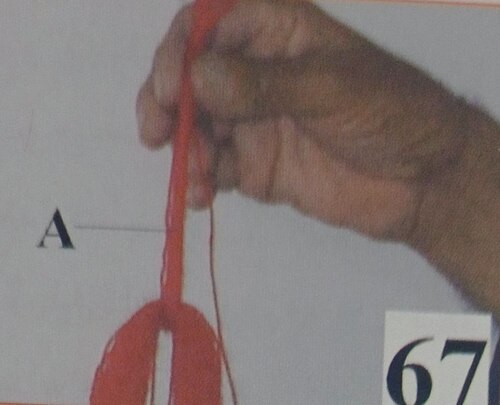
Ban
The wool or cotton threads. (See Figure 68)
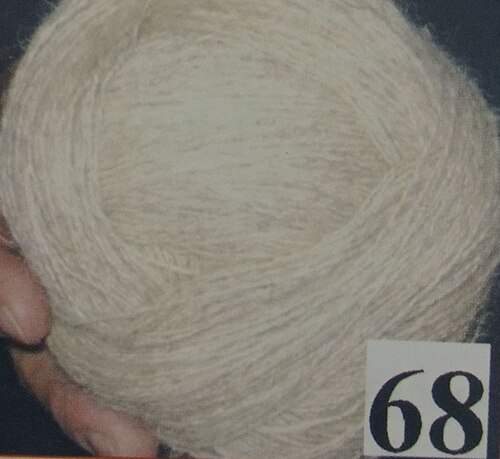
Loosely Spun Thread
It is a kind of thread that even after being spun, is not tight enough, or in the process of spinning, it was not spun enough. This kind of thread is not suitable for knitting or being spun because it will cut easily. (See Figure 69)
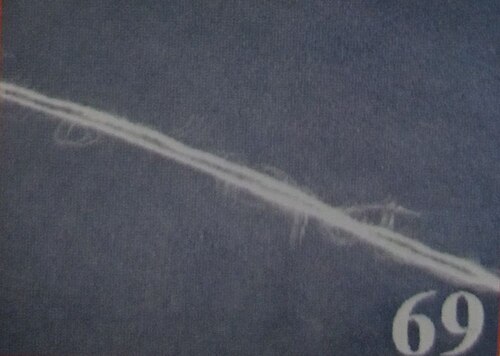
Too Spun Thread
It is a kind of thread being spun too much which will lead to it turning into a clog and making ties (See figure 70). The person who prepares the wool and cotton to make them into threads should be aware of how much to spin the wool or cotton so that it will not spin too much.

Pishtmasilka/ Mam Shabaqa
To attach to Kir pieces together in a particular way. In this situation, each piece of the fabric will be stitched and then the needle will pass through the stitches. (See Figure 71)
This method of stitching is mostly used for high quality Barmals.
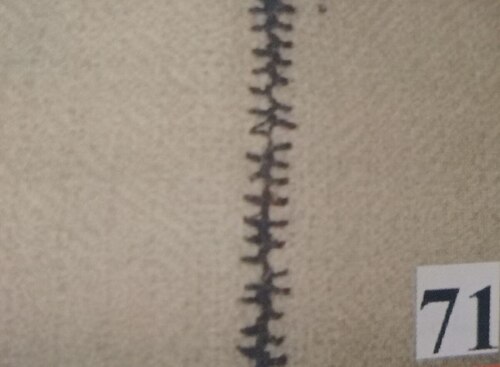
Po (Weft)
The crosswise threads that will be tied to the wraps by Makouk that the spinner is passing through the wraps.
Wool/ Cotton
Sheep or camel wool that is not spun yet and can be used to make mattresses, quilts, and such items. When it is spun, it can be used in knitting or sewing. (See Figure 72)
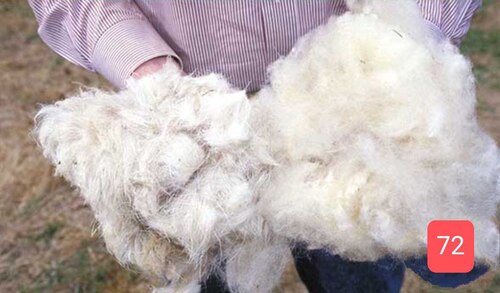
Pe (Foot)
It is a measuring scale for measuring the length of twenty ties on the Bangurd on the Dargurd. (See Figure 73)
NOTE: Each Gurd includes two logs that are attached together with a strong thread called Bangurd which is firmly installed on a special part of the machine. On each log, eighty ties will be tied and underneath each tie, a ring will be hanged for less than ten centimeters, these two rings are attached together like a chain. Thus, both logs of the Gurd have eighty pairs of ties. From the first tie to the twentieth tie will be regarded as "a foot" (See figure A_74).
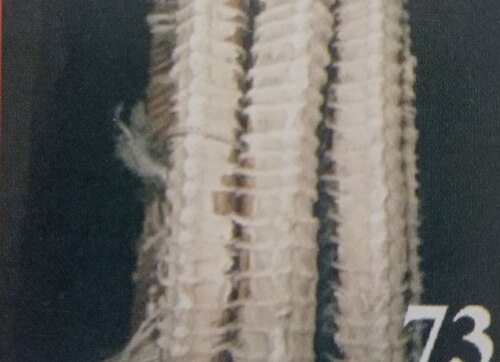
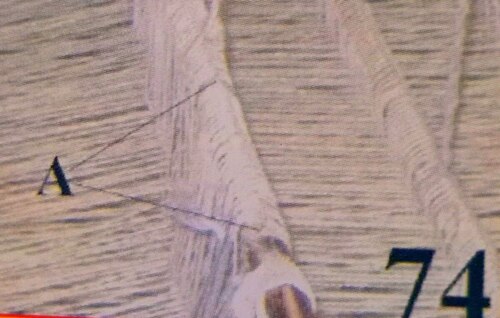
Pechal
This term has two meanings in the spinning process. First, it means the act of the spinner when he pushes the Petata with his foot which is called "Pechal Kirdn", and second, a hole under the spinner's feet for the Petatas to be installed in. although nowadays they do not make this hole, because the spinning machine has been elevated enough for the spinner to be able to push the Petata easily. In the past, the framework logs of the machine were as low as not to touch the ground, so the spinner had to dig a hole for the Petata to move under his feet.
Sewing together/ Attaching together
To sew the pieces of spun fabrics when they are finished. These pieces were sewn together with a thread of the same color as the fabrics. This is a delicate job and requires a great deal of attention because while the fabric is spun, the pattern on it will be on both pieces and sewing them needs to be done carefully so that the patterns will be sewn together precisely and equally. The tailor who sews the fabric pieces needs to sew them very carefully.
NOTE: When the fabrics are not sewn, it means they are brand new, so it is not advised to be sewn in front of the spinner and shipped off to the market. It is better for the customers to buy the fabrics from the spinner directly and then sew them at home. Sewing the fabrics is a feminine job and they have various methods for sewing them such as "Sardrou", "Mam Shabaqa or Pishtmasilka", "Gagera or Bingre", and "Shash taqal".








